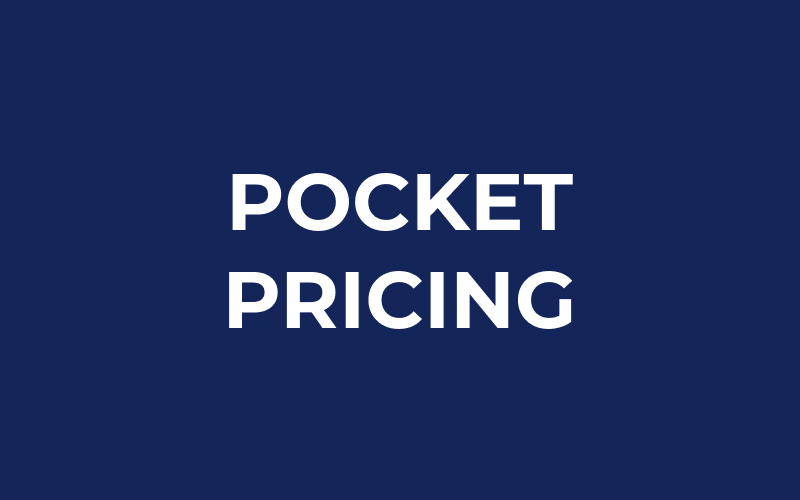
Pocket pricing
Pocket pricing refers to the pricing strategy used in retail and ecommerce businesses that is based on the idea that consumers are willing to pay more for a product if it is small and convenient enough to fit in their pocket. This concept is most commonly used for products like snacks, drinks, and personal care items, where consumers are willing to pay a higher price for the convenience of being able to take them with them on-the-go.
Retail and ecommerce businesses that use this pricing strategy often have different price points for different sizes or packaging options. For example, a snack might cost more in a single-serving pack than in a larger, multi-serving pack. This way, consumers have the option to choose the size and price point that works best for them.
In addition to the convenience factor, businesses that use “pocket pricing” can also leverage the perceived value of their products. For example, if a consumer perceives a product to be of high quality, they may be willing to pay a higher price for the convenience of having it with them.
One of the keys to success with this pricing strategy is having a deep understanding of your target market and what they are willing to pay for the convenience of having a product in their pocket. Businesses need to strike a balance between charging a premium price for the convenience factor, while also ensuring that their prices are competitive with other products in the market.
Impact of pocket pricing for ecommerce and retail businesses
Affordability: Businesses can use pocket pricing to make their products or services more affordable and accessible to a wider range of consumers.
Market positioning: Businesses can use pocket pricing to position their products as budget-friendly, making them more attractive to price-sensitive consumers.
Product differentiation: Businesses can use pocket pricing to differentiate their products from their competitors, by offering lower prices for similar products or services.
Cost-based pricing: Businesses can use cost-based pricing, where prices are set based on the costs of production, to determine the appropriate price point for a budget-friendly product or service.
Sales and promotions: Businesses can use pocket pricing as part of their sales and promotions strategy to create a sense of urgency and encourage consumers to make a purchase.
Summary
Pocket pricing is a pricing strategy used in retail and ecommerce businesses that is based on the idea of consumers being willing to pay more for a product if it is small and convenient enough to fit in their pocket. This concept leverages the convenience factor and the perceived value of a product, but success depends on a deep understanding of the target market and competitive pricing.

